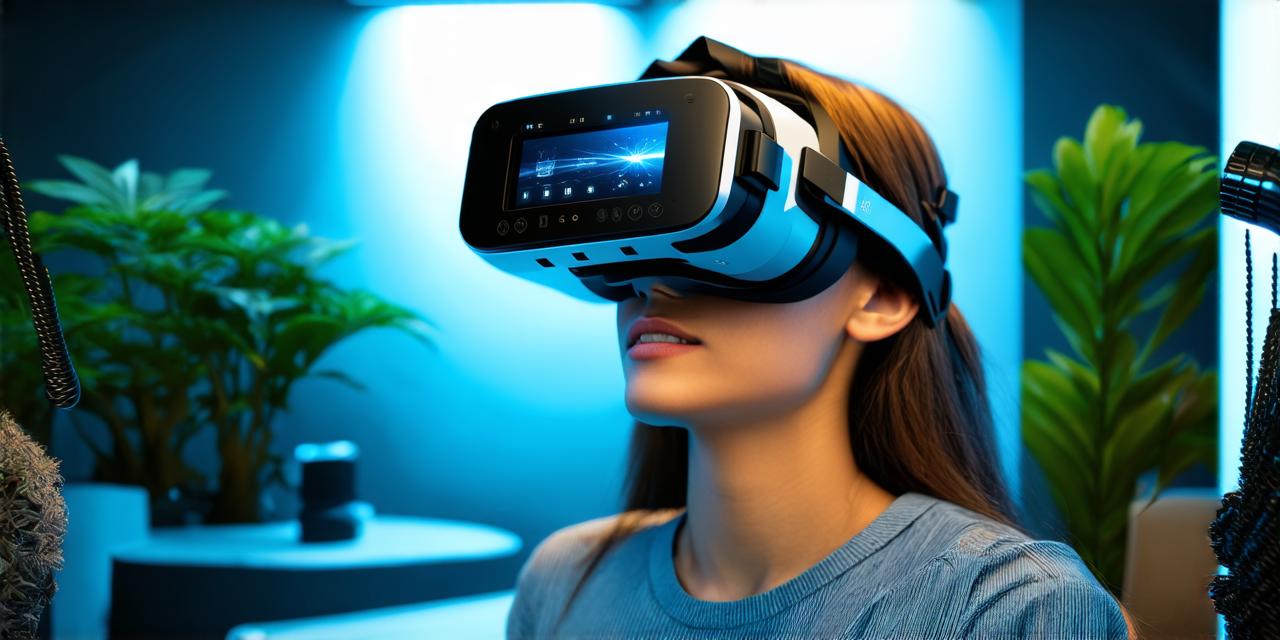Haptic Feedback: The Future of Immersive Experiences
One of the biggest challenges facing VR developers is creating a sense of presence in virtual environments. While current technology has made great strides in creating convincing visual and auditory experiences, it’s still missing that final piece – tactile feedback. Haptic feedback technology promises to change this by providing users with physical sensations that match what they’re experiencing in the virtual world.
By adding haptic feedback, VR developers can create even more immersive experiences that transport users into fully realized virtual environments. For example, a surgeon could use haptic gloves to feel the sensation of cutting through flesh and bone during a surgical procedure, while a pilot could experience the vibrations and forces of an aircraft in flight.
Haptic feedback technology is still in its early stages, but it’s already making waves in industries such as gaming and entertainment. By providing users with a more realistic and immersive experience, haptic feedback has the potential to revolutionize the way we interact with virtual content.
Augmented Reality: A New Frontier for VR Development
While VR technology is focused on fully immersing users in virtual environments, augmented reality (AR) is all about overlaying digital content onto the real world. AR is already being used in a variety of industries, from retail to gaming to healthcare.
For example, IKEA has been using AR technology to help customers visualize how furniture would look in their homes before they buy it. Similarly, in the gaming industry, AR is being used to create interactive games that blend physical and digital elements. In healthcare, AR can be used to provide doctors with real-time information about a patient’s medical history and current condition, allowing them to make more informed decisions about treatment.
AR technology is still in its early stages, but it has the potential to become a major player in the VR industry. By providing users with new ways to interact with their surroundings, AR can open up new possibilities for virtual experiences and enhance the way we live our lives.
Wireless VR: The Future of Remote Collaboration
One of the biggest challenges facing remote teams is communication and collaboration. While video conferencing and other tools have made it easier to connect with colleagues from around the world, they still lack the immersive experience of being in the same room. Wireless VR technology promises to change this by providing a way for team members to collaborate in virtual environments without being tethered to their devices.
By using wireless VR headsets and hand controllers, team members can work together in virtual environments that mimic real-world office spaces or manufacturing plants. This allows them to collaborate on projects in real time, no matter where they are located. For example, a team of architects could use wireless VR technology to design a building together, even if they’re located on opposite sides of the world.
Wireless VR technology is still in its early stages, but it has the potential to revolutionize the way remote teams collaborate and work together. By providing a fully immersive experience that feels like being in the same room, wireless VR can help bridge the gap between team members and improve productivity.
The Future of VR: Where We’re Going Next
As VR technology continues to evolve, we can expect to see even more exciting developments in the years to come. From haptic feedback to augmented reality to wireless VR, these technologies have the potential to transform the way we interact with virtual content and each other.
In order to stay ahead of the curve, it’s important for developers to constantly innovate and push the boundaries of what’s possible in the VR industry. By doing so, they can create experiences that are more immersive, interactive, and engaging than ever before.
In conclusion, virtual reality technology is rapidly evolving, and there are many exciting trends emerging in the industry. From haptic feedback to augmented reality to wireless VR, these technologies have the potential to revolutionize the way we live, work, and play. By embracing these trends and constantly innovating, developers can create experiences that are truly groundbreaking and transformative.
